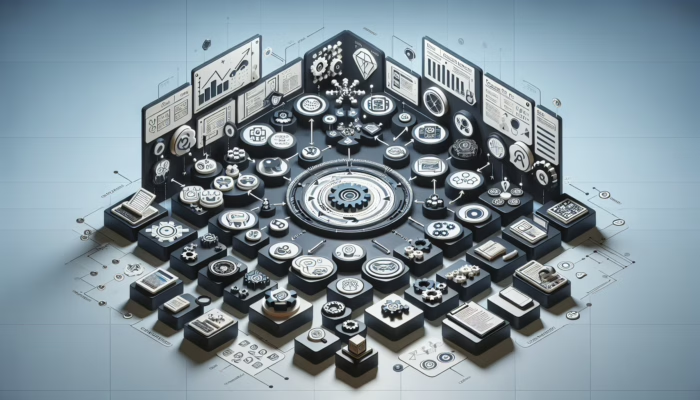Last Updated on 27/05/2025 by Admin
Understanding the Purpose and Functionality of Hearing Aids
Key Objectives of Hearing Aids for Enhanced Communication
Hearing aids play an essential role in significantly improving the auditory experience for individuals who face hearing loss, a condition that impacts millions of people worldwide. Their main goal extends beyond simple sound amplification; they are designed to enhance communication capabilities for users. Unlike traditional amplifiers that indiscriminately increase all sounds, hearing aids utilize advanced technology to selectively process and amplify sound. This sophisticated approach allows them to differentiate between speech and background noise, enabling users to engage in meaningful conversations without being distracted by overwhelming ambient sounds.
The technology embedded in hearing aids prioritizes providing clarity and user comfort. These devices capture sounds from various environments, process these signals, and deliver them in a manner specifically tailored to the user’s unique hearing profile. This selective amplification is especially vital in social settings where understanding speech is crucial. Picture yourself enjoying a lively café in Paris or participating in a family gathering in Tokyo; the ability to hear and engage without straining to decipher words is incredibly valuable.
Furthermore, hearing aids are constructed with medical insights, integrating feedback from audiologists to enhance user experience continuously. Their design aims not only to improve hearing but also to elevate the quality of life for individuals with hearing impairments. By promoting social interaction and emotional well-being, hearing aids serve as a bridge to more fulfilling experiences.
Understanding the Functions of Amplifiers in Sound Enhancement
Amplifiers differ fundamentally from hearing aids in both functionality and application. Their primary role is to increase the overall volume of sound without any discrimination, making them suitable for various scenarios such as music playback, public speaking, or other contexts where enhanced sound is desired. Unlike hearing aids, amplifiers lack the sophisticated sound processing features that cater to individual user needs; their primary function is simply to amplify sounds indiscriminately.
Consider attending a concert in New York City, where amplifiers may be used to project music across expansive venues. While amplifiers can effectively increase volume, they do not provide the nuanced adjustments that hearing aids offer. For someone with hearing loss, relying on an amplifier can lead to frustration, as they may struggle to follow conversations amidst the amplified noise of a crowded setting.
Additionally, amplifiers can be cumbersome to operate. They typically come with basic knobs or digital controls but lack the advanced technology found in hearing aids, which automatically adapt to different sound environments. This distinction emphasizes the limitations of amplifiers in meeting the specific needs of individuals with hearing impairments.
Customizing Hearing Solutions for Individual Users
One of the most significant advantages hearing aids have over amplifiers is the extensive level of customization available to users. Hearing aids can be fine-tuned to match an individual’s specific hearing profile, accommodating varying degrees of hearing loss across different frequencies. This customization process typically involves professional assessments conducted by audiologists, who use specialized equipment to create a comprehensive hearing profile that outlines the user’s unique hearing capabilities and challenges.
In comparison, amplifiers provide only basic volume control and lack the sophisticated adaptation features that address individual hearing profiles. For example, a person with high-frequency hearing loss could benefit from a hearing aid programmed specifically to amplify those sound frequencies, while an amplifier would merely exacerbate all sounds equally, potentially resulting in distortion and discomfort.
This level of customization is crucial not merely for comfort but also for enhancing everyday communication. Picture navigating a bustling market in Istanbul, where the sounds of vendors, shoppers, and street performers blend into a chaotic background. A hearing aid can help users focus on important conversations without amplifying the overwhelming noise surrounding them. Tailoring hearing solutions not only enhances the auditory experience but also boosts confidence in engaging socially across diverse environments globally.
In-Depth Look at Design and Technology in Hearing Aids
Essential Components of Hearing Aids for Optimal Performance
The design of hearing aids is meticulously crafted, taking into account both user comfort and cutting-edge technology. Each hearing aid generally consists of several key components, including microphones, amplifiers, and speakers. These devices are engineered to fit comfortably in or behind the ear, ensuring they are discreet and easy to wear throughout the day. The use of advanced materials and ergonomic designs guarantees that users can wear them for extended periods without discomfort.
Microphones function as the entry point for sound, capturing audio from the environment and converting it into electrical signals. These signals are then processed by the amplifier, which enhances targeted frequencies based on the user’s hearing profile. Finally, the speaker transforms these processed signals back into sound waves, delivering them directly into the ear.
Modern hearing aids also integrate technologies such as digital signal processing, which optimizes sound quality and clarity. This allows users to experience a more natural listening environment, whether they are attending a lecture in Sydney or sharing stories around a campfire in the Canadian wilderness. Furthermore, many hearing aids are equipped with Bluetooth connectivity, enabling seamless integration with smartphones and other devices for calls and music playback.
Understanding the Build and Features of Amplifiers
The construction of amplifiers stands in stark contrast to the intricate design of hearing aids. Generally, amplifiers are larger and intended for external use, making them less convenient for daily wear. They often feature simple knobs or digital controls for adjusting volume levels but lack the advanced technology that allows hearing aids to adapt to diverse sound environments automatically.
For instance, using an amplifier at a public speaking event in London can enhance the speaker’s voice, but it fails to differentiate between the presenter’s sound and surrounding noise. This could lead to a muddled auditory experience, where users struggle to focus on the speaker, distracted by various sounds in the environment.
The simplicity of an amplifier’s design presents both advantages and limitations. While they are easy to operate and set up, individuals with hearing loss may find that the lack of precision in sound processing does not adequately meet their needs. Unlike hearing aids, which offer tailored auditory experiences, amplifiers can lead to auditory fatigue due to their indiscriminate amplification of all sounds.
Technological Innovations Shaping Modern Hearing Aids
The evolution of hearing aids has been remarkable, driven by advancements in digital technology. Today’s hearing aids frequently incorporate digital signal processing, allowing them to analyze sound environments and adjust accordingly. This technology takes into account various factors, such as background noise levels and the specific frequencies requiring amplification, ensuring users receive a personalized auditory experience.
Many cutting-edge hearing aids come with Bluetooth capabilities, facilitating direct connections to smartphones, tablets, or other devices for phone calls, music streaming, and more. For instance, a user can effortlessly transition from listening to a podcast in Stockholm to participating in a video call at home, all without needing to remove their hearing aids.
In contrast, amplifiers primarily focus on raw sound amplification, lacking the sophisticated processing capabilities that hearing aids offer. While amplifiers serve well in scenarios like concerts or public events, they do not provide the customized experience that individuals with hearing loss require. The technological advancements in hearing aids demonstrate a commitment to improving the quality of life for users, ensuring they can fully engage in diverse social situations worldwide.
Advanced Sound Processing Techniques
Effective Frequency Management in Hearing Aids
One of the crucial aspects that differentiate hearing aids from amplifiers is their ability to effectively manage sound frequencies. Hearing aids are engineered to adjust frequencies in order to compensate for specific hearing losses, thereby enhancing sound clarity. This frequency management is essential for individuals whose hearing loss may vary across different pitches.
For instance, a person may struggle to hear higher frequencies, such as consonants in speech. Hearing aids employ advanced algorithms that specifically amplify these frequencies, making it easier for users to comprehend conversations in noisy environments, like bustling markets in Mumbai or busy restaurants in Rome. The capability to tailor the amplification process to individual hearing profiles ensures users enjoy a richer auditory experience.
On the other hand, amplifiers indiscriminately boost all frequencies, which can lead to distortion, particularly at high volumes. This lack of frequency discrimination can be detrimental to someone with hearing loss; they may find themselves overwhelmed by sound and unable to distinguish important speech from background noise. The precision with which hearing aids manage sound frequencies allows users to navigate complex auditory landscapes without feeling overwhelmed.
Sound Output Differences Between Hearing Aids and Amplifiers
When evaluating sound output, the differences between hearing aids and amplifiers become even more apparent. Amplifiers uniformly increase all sounds, which may initially appear beneficial. However, this indiscriminate amplification can result in distorted audio, especially at higher volumes. For instance, in a crowded venue in São Paulo, an amplifier can raise sound levels, but it may also amplify unwanted noise, making it challenging for individuals with hearing loss to focus on desired sounds, such as a conversation.
Conversely, hearing aids are meticulously engineered to optimize sound output based on individual hearing needs. They utilize sophisticated processing techniques to enhance clarity while minimizing distortion, even in complex sound environments. This means that a user can comfortably engage in a conversation at an outdoor café in Sydney, enjoying the vibrant atmosphere without being overwhelmed by background noise.
The quality of sound output underscores the necessity for specialized devices tailored for individuals with hearing loss. While amplifiers may serve a purpose in specific contexts, they fail to offer the nuanced auditory experiences that hearing aids provide. This distinction emphasizes the vital role of personalized auditory technology in improving communication and enriching daily interactions for those with hearing impairments.
Innovative Noise Reduction Techniques in Hearing Aids
Noise reduction is a critical feature that sets hearing aids apart from amplifiers. Hearing aids are equipped with advanced noise reduction algorithms that filter out unwanted background sounds, allowing users to focus on the sounds that matter most. This is particularly advantageous in environments with multiple sources of noise, such as a busy airport in Dubai or a vibrant street market in Bangkok.
These algorithms analyze the sound environment in real time, distinguishing between speech and noise. For instance, while attending a theater performance in London, a hearing aid can enhance the actor’s voice while simultaneously minimizing the sounds of rustling programs or whispered conversations. This selective filtering is essential for ensuring that users can enjoy clear communication without unnecessary distractions.
In contrast, amplifiers lack these advanced noise reduction features. By amplifying all sounds uniformly, they can create an overwhelming auditory experience that may discourage individuals with hearing loss from using them in social settings. The noise reduction capabilities of hearing aids not only enhance clarity but also contribute to users’ overall comfort, allowing them to engage in conversations without the strain of excessive background noise.
The Importance of Sound Compression in Hearing Aids
Sound compression technology represents another vital distinction between hearing aids and amplifiers. Hearing aids use compression to manage the dynamic range of sounds, ensuring both comfort and audibility across varying noise levels. This means that in noisy environments, such as a bustling café in Madrid, hearing aids can compress louder sounds while amplifying softer sounds, resulting in a balanced auditory experience.
For individuals with hearing loss, this technology is crucial. It enables them to hear significant sounds—like a friend’s voice—without being overwhelmed by sudden loud noises, such as a passing motorcycle. The dynamic range management that hearing aids provide helps users navigate diverse soundscapes without discomfort or auditory fatigue.
Conversely, amplifiers do not utilize sound compression techniques; they merely increase all sounds, which can lead to discomfort and distortion, particularly in environments with fluctuating noise levels. The inability to effectively manage sound dynamics signifies that amplifiers may not be suitable for individuals with hearing impairments who require a more tailored auditory experience.
Sound compression not only enhances clarity but also significantly contributes to the user’s overall quality of life, allowing them to participate in social interactions more comfortably and confidently.
Feedback Cancellation Technology Enhancing User Experience
The incorporation of feedback cancellation technology in hearing aids represents a significant advancement over traditional amplifiers. Feedback occurs when amplified sound from the hearing aid speaker re-enters the microphone, causing a whistling or buzzing noise that can be quite distracting for users. Hearing aids are equipped with feedback cancellation systems that identify and neutralize these feedback loops, ensuring a smoother auditory experience.
For example, during a family gathering in New Orleans, a user wearing a hearing aid can comfortably engage in conversations without the annoyance of feedback interruptions. This technology enables a seamless flow of communication, enhancing user confidence in social situations.
Conversely, amplifiers typically lack feedback cancellation technology. This absence makes them less suitable for individuals with hearing loss who may experience feedback-related issues. The risk of irritating sounds can deter users from utilizing amplifiers in everyday situations, underscoring the significance of specialized hearing solutions for effective communication.
Feedback cancellation in hearing aids not only improves user experience but also enhances overall satisfaction with the device, creating an environment where individuals can engage freely in conversations without the fear of discomfort.
Enhancing User Experience with Hearing Aids
Prioritizing Comfort and Wearability in Hearing Aids
Comfort and wearability are crucial factors when it comes to hearing aids, especially since many users wear them for extended periods. The design of hearing aids is tailored to fit comfortably in or behind the ear, ensuring they remain unobtrusive throughout daily activities. This ergonomic consideration is particularly vital for individuals who may struggle with discomfort stemming from bulky or ill-fitting devices.
For instance, whether navigating the lively streets of Barcelona or participating in a conference in Johannesburg, users benefit from the discreet nature of modern hearing aids. Their shapes and materials are designed to minimize irritation and maximize comfort, allowing users to focus on their surroundings rather than constantly adjusting their devices.
In contrast, amplifiers, which are generally larger and intended for external use, are not designed for prolonged wear. Users may find them cumbersome to manage, particularly in social situations where discreet communication is essential. This limitation can detract from the user experience, making it less likely for individuals with hearing loss to utilize amplifiers on a regular basis.
The comfort and wearability of hearing aids significantly contribute to user satisfaction. When devices fit well and feel comfortable, users are more likely to wear them consistently, which is vital for maintaining effective communication and social interaction.
Ensuring Ease of Use with Hearing Aids
Ease of use is a critical consideration for anyone choosing between hearing aids and amplifiers. Hearing aids often necessitate professional fitting and adjustments, guided by audiologists who assess individual hearing profiles. While this initial setup may seem daunting, it ensures users receive devices tailored to their specific needs.
Once fitted, many modern hearing aids come with intuitive controls and features, including smartphone connectivity for seamless operation. Users can easily adjust settings or switch between different listening modes, enhancing the overall experience. For instance, attending a lecture in Toronto becomes significantly more manageable when users can switch to a setting specifically designed for speech recognition.
Conversely, amplifiers are generally straightforward to operate, with simple manual controls for adjusting volume. However, this simplicity comes at a cost; users may find that amplifiers do not adequately address their needs, particularly in complex sound environments.
The ease of use provided by hearing aids is coupled with a commitment to enhancing the communication experience. Users benefit from specialized features designed to address their unique challenges, making social interactions more enjoyable and fulfilling.
Feedback Management and Maintenance of Hearing Aids
Effective feedback management is a crucial aspect of the user experience with hearing aids. While these devices may produce feedback in certain situations, the technology designed for feedback cancellation minimizes such occurrences, allowing users to engage in conversations without distraction. Regular maintenance, including cleaning and battery checks, is essential to ensure that hearing aids remain in optimal condition, enhancing their effectiveness.
Conversely, amplifiers are generally low-maintenance devices. Users can easily change batteries or make basic adjustments, but they lack the sophisticated technology required for managing feedback. This absence can lead to frustration, especially in social settings.
Overall, while amplifiers may offer convenience in terms of maintenance, the feedback management capabilities and tailored support of hearing aids make them a more reliable choice for individuals with hearing loss. Regular maintenance fosters a positive user experience, enabling individuals to engage confidently in various social situations.
Customization and Connectivity Features in Hearing Aids
Customization and connectivity are standout advantages of modern hearing aids. Many devices offer programmable settings tailored to individual preferences, allowing users to adjust their auditory experience based on specific environments. This customization can significantly enhance user satisfaction, especially in diverse settings such as restaurants, theaters, or outdoor events.
In addition to customization, many hearing aids now include Bluetooth connectivity, enabling users to connect directly to smartphones, tablets, or other devices. This functionality allows for smooth transitions between phone calls, music, and everyday sounds, enhancing the overall user experience. For instance, a user can effortlessly switch from listening to a podcast during their commute in London to participating in a call without needing to remove their hearing aids.
While amplifiers are straightforward to use, they typically lack these advanced features. They do not offer the level of customization or connectivity required to address the unique challenges faced by individuals with hearing loss. Without these enhancements, users may find themselves missing out on the full auditory experience, further emphasizing the necessity for specialized hearing solutions.
The benefits of customization and connectivity significantly contribute to the overall user experience, allowing individuals to tailor their hearing solutions to their lifestyles and needs. These features foster greater independence and confidence, encouraging users to engage more fully in their environments.
Health and Safety Considerations in Hearing Aid Use
The Profound Impact of Hearing Aids on Hearing Health
The impact of hearing aids on overall hearing health is both profound and multifaceted. Designed with medical considerations in mind, hearing aids are regulated to ensure they do not cause damage to residual hearing. This is particularly critical for individuals with hearing loss, as improper use of amplification devices can lead to further deterioration of auditory capabilities.
For instance, a user with mild hearing loss who employs a hearing aid receives tailored amplification that enhances their hearing without risking additional damage. In contrast, amplifiers may pose a risk when misused; they can produce excessively loud sounds that exacerbate hearing loss or lead to auditory fatigue.
Health professionals recommend that individuals with hearing impairments undergo assessments and consultations with audiologists to determine the best hearing solutions for their needs. This professional guidance is essential for ensuring users select devices that safeguard their hearing health while enhancing their auditory experiences.
The emphasis on health and safety in hearing aid use underscores the importance of making informed choices. By selecting the right devices, individuals can enjoy improved communication and social interaction without compromising their hearing health.
The Importance of Volume Control Limits in Hearing Aids
Volume control limits are a critical aspect that differentiates hearing aids from amplifiers. Hearing aids are equipped with built-in limits designed to protect users from exposure to dangerously high volumes. This feature is essential for preventing additional hearing damage, particularly for individuals already experiencing hearing loss.
For example, in a loud environment, such as a sports event in Melbourne, hearing aids automatically adjust to ensure users do not experience discomfort from excessively loud sounds. This built-in protection reflects a fundamental design principle that considers the medical understanding of hearing loss and its implications.
In contrast, amplifiers typically lack such volume level restrictions. Users may inadvertently increase the volume to harmful levels without realizing the risks, potentially leading to long-term damage. The absence of volume control limits can discourage individuals from using amplifiers, especially those who are mindful of their hearing health.
The presence of volume control limits in hearing aids emphasizes the commitment to user safety and well-being. By regulating sound levels, hearing aids provide a secure auditory experience, allowing individuals to enjoy social interactions without fear of further hearing damage.
Seeking Professional Guidance in Hearing Aid Selection
The importance of seeking professional guidance cannot be overstated when it comes to selecting hearing aids. Audiologists play a critical role in evaluating individual hearing profiles and recommending appropriate devices. This professional oversight ensures that users receive the best possible solutions tailored to their specific needs.
For instance, during a consultation, an audiologist can assess the degree of hearing loss and recommend hearing aids equipped with features best suited for the user’s lifestyle. This personalized approach fosters a sense of confidence in the chosen device, allowing users to engage more fully in social interactions.
Conversely, amplifiers typically do not require professional input for selection and usage. While this ease of access may appeal to some, it can also lead to the risk of selecting devices that do not adequately address individual hearing challenges.
The guidance provided by audiologists reinforces the importance of informed decision-making in hearing health. By utilizing the expertise of professionals in selecting hearing aids, individuals can experience improved quality of life and enhanced communication skills.
Cost and Accessibility of Hearing Aids
Understanding the Price Range of Hearing Aids
The price range for hearing aids often reflects the level of customization and technology involved in their production. Generally, hearing aids are more expensive than amplifiers due to the sophisticated technology and individualized fitting processes. The cost of hearing aids can vary significantly, influenced by factors such as brand, features, and level of customization.
For example, advanced models with Bluetooth connectivity and noise reduction capabilities may command higher prices but also provide substantial benefits in terms of user experience. In contrast, amplifiers are typically more affordable, making them accessible to a broader audience; however, they lack the specialized features essential for effective hearing support.
The cost of hearing aids can be a significant consideration for many individuals, and it’s essential to explore options for insurance coverage or funding programs. In some regions, health insurance may cover a portion of the cost, making these devices more accessible for those in need.
The disparity in price highlights the value of investing in hearing aids, particularly for individuals with hearing loss. While amplifiers may appear to be a quick fix, the long-term benefits of tailored hearing solutions often justify the higher expense.
Insurance Coverage and Funding Opportunities for Hearing Aids
Insurance coverage for hearing aids varies widely by region and provider. In several countries, health insurance plans may offer partial coverage for hearing aids, recognizing their importance in supporting individuals with hearing impairments. This coverage can significantly reduce the financial burden associated with purchasing hearing aids, making them more accessible to those who need them.
Funding programs are also available in many areas to assist individuals in obtaining hearing aids. These initiatives aim to provide financial assistance to those who may not have the means to afford such devices. Access to these resources can make a considerable difference for individuals seeking to improve their hearing health.
In contrast, amplifiers are generally considered out-of-pocket expenses, with little to no insurance coverage available. This lack of support can limit accessibility for individuals who may not have the resources to invest in these devices.
The disparity in insurance and funding options underscores the importance of exploring available resources for hearing aids. With the right financial support, individuals can significantly enhance their quality of life and communication abilities.
Availability of Hearing Aids Through Professional Channels
Hearing aids are typically available through healthcare providers, including audiologists and specialized clinics. This availability ensures that users can receive personalized assessments and fittings, leading to better outcomes. Many organizations offer a range of hearing aids, ensuring that users can select devices that meet their specific needs.
Conversely, amplifiers can be purchased from a variety of retail outlets, including electronics stores and online platforms. While this accessibility may seem convenient, it lacks the professional support necessary for individuals with hearing loss. Without expert guidance, users may find it challenging to select devices that effectively address their auditory challenges.
The availability of hearing aids through healthcare providers highlights the importance of professional involvement in the selection process. Individuals benefit from tailored solutions that significantly improve communication and social interaction, reinforcing the value of specialized care.
Maintenance and Repair of Hearing Aids
Hearing aids often require professional maintenance and repair services to ensure their longevity and effectiveness. Regular cleaning, battery checks, and software updates are essential for maintaining optimal performance. Audiologists typically provide these services, allowing users to rely on expert assistance for upkeep.
On the other hand, amplifiers tend to be easier and cheaper to maintain or replace. Users can handle basic maintenance themselves, such as changing batteries or cleaning devices. However, the simplicity of amplifiers comes at the cost of lacking advanced features and support.
Investing in hearing aids entails a commitment to ongoing care; however, the advantages of tailored support and professional maintenance far outweigh the challenges. Individuals who prioritize their hearing health through regular maintenance can enjoy a more fulfilling auditory experience.
Accessibility Features in Hearing Aids for Enhanced User Experience
Hearing aids come equipped with advanced accessibility features designed to enhance user experience. These may include Bluetooth connectivity, directional microphones, and customizable settings, allowing individuals to tailor their auditory experience to meet their specific needs. This level of accessibility is crucial for individuals navigating diverse environments, from bustling urban centers to quiet rural settings.
In contrast, amplifiers offer basic volume enhancement without additional accessibility options. While they may suffice for simple sound amplification, they do not address the unique challenges faced by individuals with hearing impairments.
The presence of advanced accessibility features in hearing aids emphasizes the commitment to improving the quality of life for users. By enhancing the auditory experience, these devices empower individuals to engage more fully in their environments, fostering social interaction and personal growth.
Real-World Applications and Use Cases for Hearing Aids and Amplifiers
Integrating Hearing Aids into Daily Life for Better Communication
Hearing aids are instrumental in enhancing daily life for individuals with hearing loss. They are consistently used to facilitate communication and social interaction, significantly improving users’ ability to engage in conversations and connect with their surroundings. For example, attending a family gathering or enjoying a cultural event becomes a more rewarding experience with the support of hearing aids.
In everyday scenarios, such as shopping in a local market or participating in a work meeting, hearing aids empower users to navigate complex sound environments effectively. The ability to hear and understand speech clearly fosters connections and relationships, contributing positively to overall emotional well-being.
Worldwide, the presence of hearing aids in daily life underscores their value as essential tools for communication. From urban settings to rural communities, these devices empower individuals with hearing loss to lead fulfilling lives, unlocking opportunities and experiences that might otherwise remain inaccessible.
The Role of Amplifiers in Entertainment and Events
Amplifiers are commonly employed in entertainment settings to enhance sound quality. For instance, they play an essential role in music performances, ensuring that audiences can enjoy rich and powerful sound experiences. Whether at a concert in Los Angeles or a theater production in London, amplifiers are crucial in delivering captivating audio experiences.
While amplifiers serve a valuable purpose in amplifying sound for entertainment, they lack the personalized features that hearing aids provide for individuals with hearing loss. They are designed to boost sound levels indiscriminately, making them less suitable for individuals who require tailored auditory solutions.
The application of amplifiers in entertainment highlights their effectiveness in specific contexts. However, for individuals with hearing impairments, the absence of specialized features may limit their utility in everyday life.
Utilizing Speech Therapy Devices for Improved Communication
Speech therapy devices, often incorporating audio technology, play a vital role in enhancing speech clarity and communication skills for individuals with speech disorders. These devices utilize various technologies to improve sound quality, assisting therapists in delivering effective treatments.
For individuals with hearing loss, using hearing aids in conjunction with speech therapy can yield additional benefits. Hearing aids provide clearer auditory feedback, enabling users to practice pronunciation and improve their communication skills in real time.
The synergy between hearing aids and speech therapy devices underscores the importance of tailored solutions for individuals with hearing impairments. By supporting speech development and clarity, these devices empower individuals to express themselves more effectively.
Assistive Listening Systems for Enhanced Clarity
Assistive listening systems are designed to enhance sound clarity in various environments, aiding individuals with hearing impairments in educational, workplace, and public settings. These systems can include FM systems, infrared systems, and loop systems, which work by transmitting sound directly to hearing aids or cochlear implants.
For example, in a classroom setting in Toronto, an assistive listening system can help students with hearing impairments focus on the teacher’s voice while minimizing distracting background noise. Similarly, in workplace meetings or public events, these systems enable individuals to engage in discussions more effectively.
The implementation of assistive listening systems reflects a commitment to inclusivity and accessibility for individuals with hearing loss. By integrating these systems into various environments, organizations can create supportive spaces that enhance communication and foster engagement for all participants.
Frequently Asked Questions about Hearing Aids and Amplifiers
What distinguishes hearing aids from amplifiers?
The primary distinction lies in their functionality. Hearing aids are engineered to selectively amplify sounds based on individual hearing profiles, whereas amplifiers indiscriminately increase the volume of all sounds.
Can I substitute amplifiers for hearing aids?
While amplifiers may provide some level of sound amplification, they lack the specialized features and customization of hearing aids, making them less effective for individuals with hearing loss.
How do hearing aids facilitate better communication?
Hearing aids enhance communication by selectively amplifying speech sounds and minimizing background noise, allowing users to engage more effectively in conversations.
Are hearing aids typically covered by insurance?
Insurance coverage for hearing aids varies by provider and region; some plans may offer partial coverage while others may not. It’s crucial to check with your insurance provider.
In what types of environments are assistive listening systems beneficial?
Assistive listening systems are advantageous in educational settings, workplaces, theaters, and public events, enhancing sound clarity for individuals with hearing impairments.
How often do hearing aids require maintenance?
Hearing aids necessitate regular maintenance, including cleaning and battery checks. Professional servicing is also recommended to ensure optimal performance.
Can hearing aids connect to smartphones?
Many modern hearing aids are equipped with Bluetooth connectivity, allowing users to connect directly to smartphones for calls, music, and other audio experiences.
What should I do if I experience feedback with my hearing aids?
If you encounter feedback, consider adjusting the fit of your hearing aids or consulting with an audiologist for guidance on optimizing settings to minimize feedback.
Are there different styles available for hearing aids?
Yes, hearing aids come in various styles, including behind-the-ear (BTE), in-the-ear (ITE), and completely-in-canal (CIC), catering to different preferences and levels of hearing loss.
How can I determine if I need hearing aids?
If you find it difficult to hear conversations, frequently ask people to repeat themselves, or struggle in noisy environments, consider consulting an audiologist for a thorough hearing assessment.
Explore our world on X!
The post Hearing Aids vs. Amplifiers: Key Differences Explained appeared first on The Microsuction Ear Wax Removal Network.























